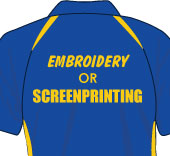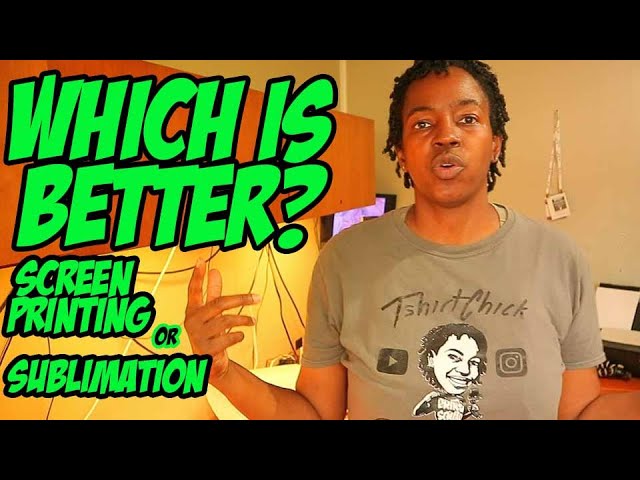The 6-Second Trick For Tx Tees
The 6-Second Trick For Tx Tees
Blog Article
The smart Trick of Tx Tees That Nobody is Discussing
Table of ContentsLittle Known Facts About Tx Tees.Not known Details About Tx Tees Tx Tees Things To Know Before You Get ThisTx Tees for DummiesSome Known Details About Tx Tees Getting The Tx Tees To WorkThe 3-Minute Rule for Tx Tees
That brings your total amount to around $1,900 gross and shipping. Add up other costs, like the variety of utilities it requires to run the store and the cost of ink and emulsion per style. screen printer. Take the print below for instance. This is a one-color image, so the expense of ink per tee shirt is roughly 20 cents.The solution should only be a couple of cents because you 'd only need to layer one screen for this task. Normally, printers attempt to make up to 45% profit on a print task.

With DTF, you can publish a handful of shirts, or just one. Make use of the very same calculator as the area over to calculate just how much earnings you 'd use DTF transfers. Contrast the expenses and profits to whichever approach speaks best to your setup and process. Both display printing and DTF have their specific niches worldwide.
7 Simple Techniques For Tx Tees
The very best way to recognize? Ask around and see what print shops like your own are doing. custom monograming. Attempt both out and see which you like much better
When you're picking what type of printing technique to use for printing your artwork styles on your garments, it's important that you know the distinctions between these two methods so you can make best use of results while lessening prices. Display printing is one of the most typically utilized technique for publishing designs on textiles.
DTG printing is likewise called place or straight to garment printing because it prints just what is required rather than making a display as screen printers do. https://www.twitch.tv/txtees02/about. Screen printing works by display filler squeegee display printing ink display mesh display, then transferring the picture to garment utilizing heat and/or stress
The DTG printer uses unique dye-sublimation inks that are applied into a pre-designed photo by a digital printing system. The inks become component of the textile, enabling for vibrant colors and outstanding information. It's also called spot or straight to garment printing because it prints only what is required rather than making a display as screen printers do.
Little Known Facts About Tx Tees.
It's much faster - you can print a fullcolor picture in mins, as opposed to hours for screen printing. Second, there's no set up time or prices involved - you can publish any kind of design you like, without having to produce a display initially. Third, there's no waste - because screen printers screen print one design each time, they have to screen each color independently.
The paper is really pricey and can just be used when. Once it's published on, it needs to be disposed of. - The preliminary purchase rate is lower than the ahead of time financial investment of DTG printers- You can print multi-color designs one screen at once rather than having to print each color separately like DTG printing.

Tx Tees Can Be Fun For Everyone
Nevertheless, as opposed to using display mesh as screen printers do, dye sublimation printers use laser innovation to move your pictures onto garments or paper. A warm procedure transfers the color from its solid-state straight into the gas phase which subsequently fuses it onto material substrates when they are swiftly heated to heats under high stress.
Sublimation printing is environmentally friendly. It utilizes much less water than screenprinting, and because it does not entail making use of harmful solvents, visit homepage it's safe for all sorts of apparel. The dye sublimation inks are likewise unsmelling when cured, unlike display printers that make use of hazardous chemicals during the screen printing process that leave an undesirable odor.
They also save cash on expensive devices like exposure systems considering that color sublimation printers don't require a UV exposure unit or a flash cure oven that is generally utilized in screen printing (custom screen printing). What is straight to garment printing (DTG Printing)? DTG printing is a digital screenprinting process that prints directly onto fabric using specialized inkjet printers
What Does Tx Tees Mean?
DTG printing offers many benefits over typical screenprinting, consisting of the capability to print photo high quality photos, higher color vibrancy, and the capacity to print layouts on darker fabrics. DTG printers function by heating up the fabric ink up until it develops into a gas. The gas after that permeates the fabric, bonding with the fibers to develop a long-term print.

Display printers merely prepare their screen then start printing until they run out of product or ink.- There is a large range of skilled screen printers all over the globe, which can be practical for newbies. - It's a slower process - display printers typically need to wait on the ink to completely dry before they can print the following color- Screen printers need hands-on labor, so there's a greater knowing curve and it takes longer to produce a high-grade layout- Screen printing isn't as exact as DTG printing, so you might obtain some "bleeding" of colors from one component of the picture onto an additional otherwise done effectively.
Tx Tees Can Be Fun For Anyone
Rather of using display mesh as display printers do, dye sublimation printers utilize laser technology to move your images onto garments or paper. A warmth process transfers the dye from its solid-state straight into the gas phase which consequently integrates it onto material substratums when they are swiftly heated to high temperature levels under high pressure.
Sublimation printing is environment-friendly. It uses much less water than screenprinting, and because it doesn't include using harmful solvents, it's risk-free for all sorts of apparel. The dye sublimation inks are additionally odor-free when healed, unlike screen printers that utilize hazardous chemicals during the display printing process that leave behind an undesirable odor.
They likewise save cash on pricey equipment like exposure devices because dye sublimation printers do not call for a UV direct exposure unit or a flash remedy stove that is usually utilized in display printing. What is straight to garment printing (DTG Printing)? DTG printing is an electronic screenprinting procedure that publishes straight onto textile using specialized inkjet printers.
Not known Details About Tx Tees
DTG printing uses lots of advantages over traditional screenprinting, including the capacity to publish photo quality images, greater shade vibrancy, and the capability to print designs on darker materials. DTG printers work by heating up the fabric ink up until it develops into a gas. The gas after that penetrates the material, bonding with the fibers to create a permanent print.
Report this page